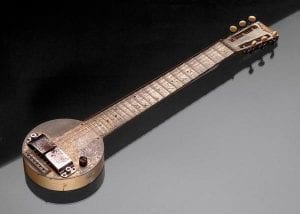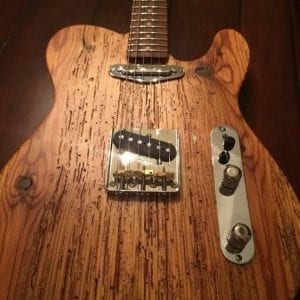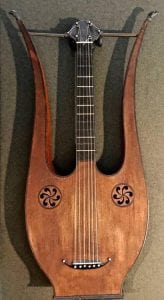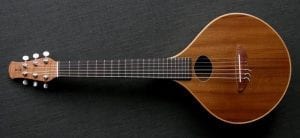I can communicate far better on a guitar than I can through my mouth.
– Jimmy Page
The guitar is a fretted, stringed instrument, and is a member of the lute family. It originated in Persia and reached Spain during the twelfth century, where it’s versatility as both a solo and accompanying instrument were established. The theory of the guitar was discovered in the early centuries. They found that the sound of a bowstring could be enhanced by attaching a resonating chamber -most like a tortoise shell- to the bow. From the bow came essentially three main types of stringed instruments: the Harp family, which was the sound of plucked strings indirectly transmitted to an attached sound box.

Guitar-shaped instruments appear in stone bas-relief sculptures of the Hittites in northern Syria and Asia Minor from as far back as 1350 B.C.The word guitar also has origins in the middle and far east, deriving from the gut, is the Arabic word for four, and tar, the Sanskrit word for string. The earliest European guitars did have four courses of gut strings. A 2 course is a pair of strings tuned in unison. These early guitars were distinguished from lutes by body sides that curved inward to form a waist and by four courses of strings. Some but not all early guitars had a flat back, while lutes always had a flat back. In the Middle Ages and the Renaissance, the lute was the dominant fretted instrument.

Among variant forms of the guitar are the 12-stringed, or double-course, guitar, and the Mexican jarana and the South American charango, both small five-course guitars. Lyre-shaped guitars were fashionable in 19th-century drawing rooms. Other forms of the guitar include the metal-strung guitar played with a plectrum in folk and popular music; the cello guitar, with a violin-type bridge and tailpiece; the Hawaiian, or steel, guitar, in which the strings are stopped by the pressure of a metal bar, producing a sweet, gliding tone; and the electric guitar, in which the instrument’s sound and tone depend almost entirely on the electronic detection and amplification of its vibrating strings.

The second most popular instrument during the Middle Ages was the cistern. It was more like the modern guitar than any other during that time. It had metal strings, fixed frets, a fingerboard that extended onto the top, a flat back, and a movable bridge with strings anchored by a tailpiece; and it was played with a quill or plectrum(pick). But this modern instrument soon lost its popularity and disappeared by late 1600?s. Through 1600’s and 1700’s the guitar design changed very little, although interest increased around luthiers.

Now you can also start communicating with your guitar just like jimmy page!
Get your first guitar only at www.instrurentals.in
